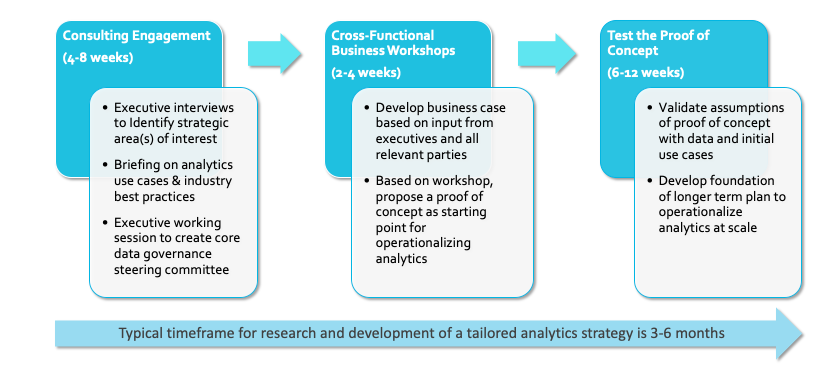Data analytics strategy is a turbocharger for business. Analytics helps you find new ways to compete and new ways for your organization to pull together. Just as turbochargers boost engine power, so analytics strategy boosts business output. Your business data can be a strategic asset, just like money and people. You manage money and your people knowing the sum is greater than the parts. Analytics strategy can do this with your data.
Why?
Many businesses underestimate the value of their data. They use their data, day in and day out to run their business, not realizing that they are accumulating a huge portfolio that can be of great value. There is a parallel between your data and your money. Just as money can be used in two ways – first, in day-to-day business transactions (purchases, sales, etc.), and second, in a portfolio of investments – the same is true of data. All companies use data transactionally, but what happens to all that data afterwards? A business can “earn an interest” on its data portfolio with an analytics strategy that integrates data from company-wide operations to yield new forms of actionable business insights.
What?
A data analytics strategy starts with identifying the most important data elements in your data portfolio, and then asking the question, what is the value of this data as a portfolio, as a single entity across the company and across accumulated history. A data analytics strategy starts by identifying just the few data sources that are the most critical, by stating the business value of considering these together and then works to build the value of the portfolio over time.
The data analytics strategy sets out to govern your data portfolio with an objective of earning a return. Governance creates a pathway for changing how you use data, from reporting to explaining to operationalizing it in your business. And herein lies the value: when data is properly governed, it provides everyone from executives to front-line employees access to a cache of integrated data to make pivotal decisions for managing the future. A few of the ways that data can create value as a portfolio are shown below:
Customer journey analytics in B2C businesses; analytics integrates data from across multiple channels/touch points to better understand how the business is creating/losing value with its customers
Focus on customer experience; the customer experience is something that can only be captured through the data; notes Lou Carbone: “the customer will have an experience, the only question will be ‘Is it one that you designed?’”
Cross-departmental collaboration on forward revenue performance; the most competitive companies achieve revenue goals through a single version of data and the processes to share it
Zero defects strategy; this strategy depends on using all of your data, all of the time, to work towards visibility and actionability to achieve desired results
When?
You should consider doing a data analytics strategy whenever you need to take your business up a level by doing any of the following:
By pivoting to new business strategies (or a specific strategic initiative)
By embarking on changes to how you compete for business
When facing an existential threat – when a change in the fundamental basis of competition is now or will become a threat to the very existence of your business

